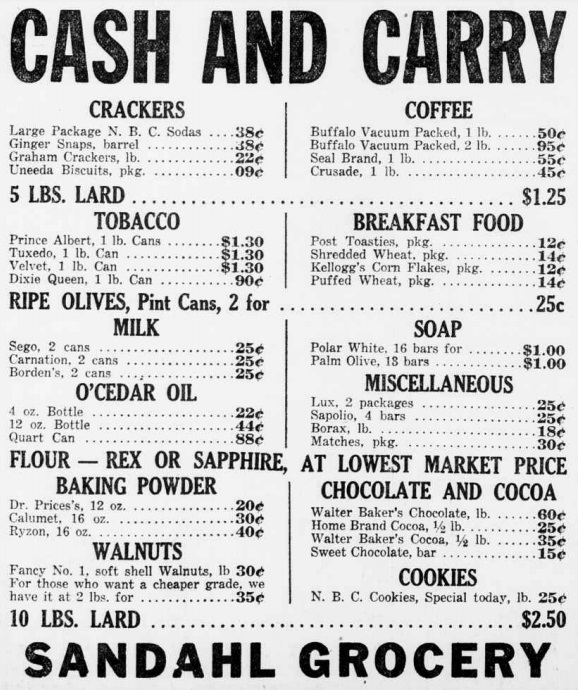 Here’s a snapshot of grocery prices a hundred years ago, from the November 29, 1920, issue of the Great Falls (Montana) Daily Tribune.
Here’s a snapshot of grocery prices a hundred years ago, from the November 29, 1920, issue of the Great Falls (Montana) Daily Tribune.
When looking at pre-1964 prices, it’s always good to remember that one dollar meant ten silver dimes, four silver quarters, or one silver dollar, which was one ounce of silver. Today, that ounce of silver would be worth about $22, so one good way to compare prices is to multiply these by 22.
A box of crackers, “N.B.C. Sodas,” which I assume means Nabisco, was 38 cents, which sounds cheap. But when you put that into today’s dollars, it’s $8.36.
10 pounds of lard would set you back $2.50, which works out to about $5 per pound in today’s money. In the cereal aisle, you could get a box of Post Toasties or Kellogg’s Corn Flakes for 12 cents, or Shredded or Puffed Wheat for 14 cents. Thirteen bars of “Palm Olive” soap were a dollar.
Coffee was about 50 cents per pound, or about $11 in today’s money. Cans of milk, presumably condensed, were 25 cents a can.

It’s easy to forget that we really live in the “cheap food” era today. People often want to remember the cost of everything being less, but by and large the opposite is the case, which actually isn’t always a good thing.
This is true of foods, of course, but also of other things such as clothing and even gasoline.